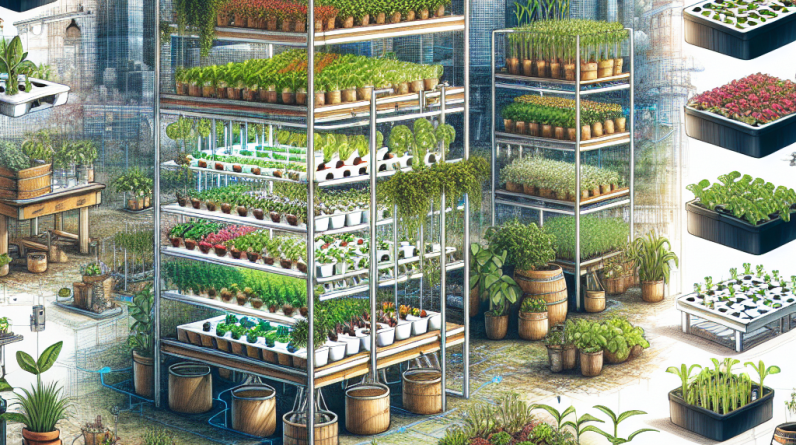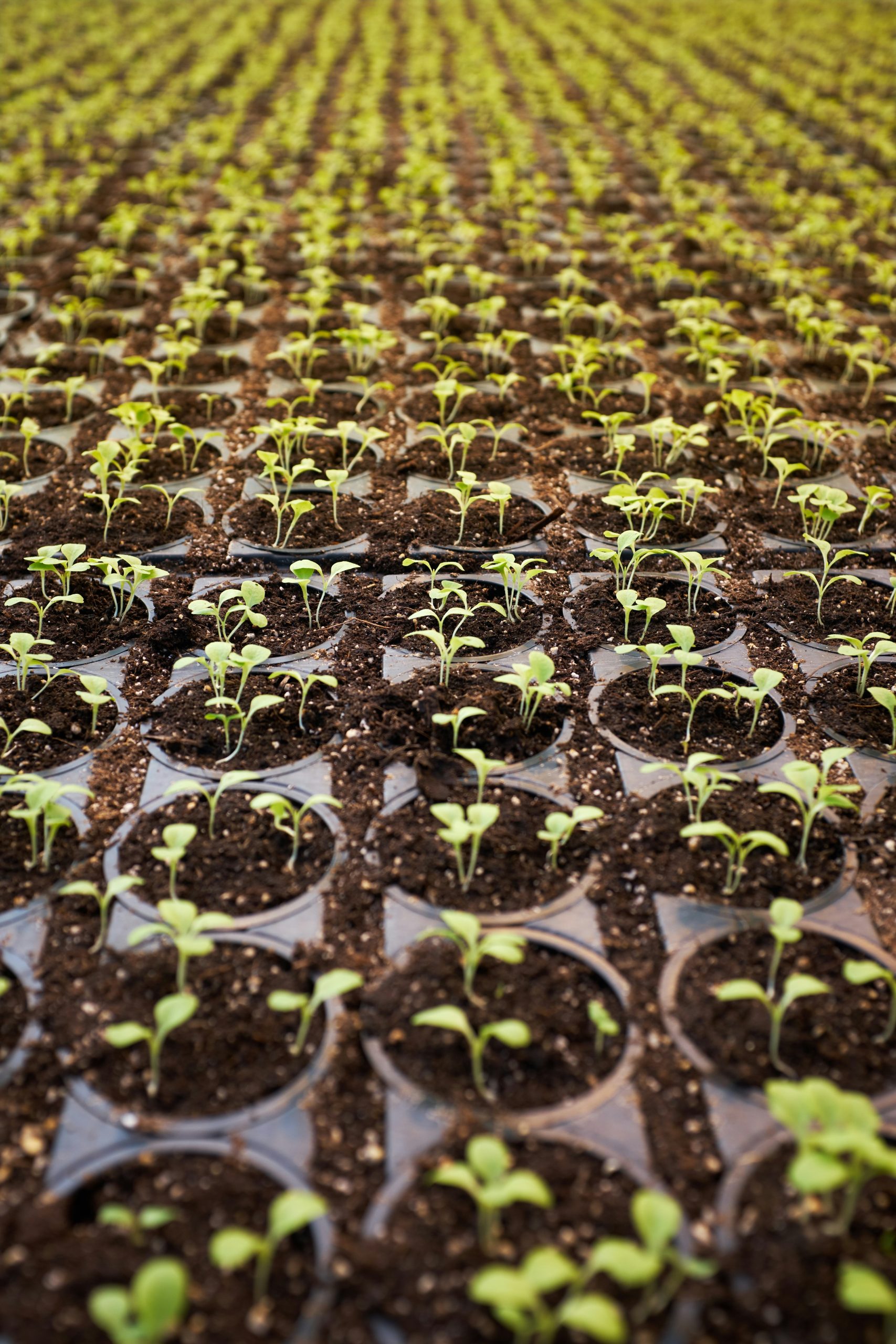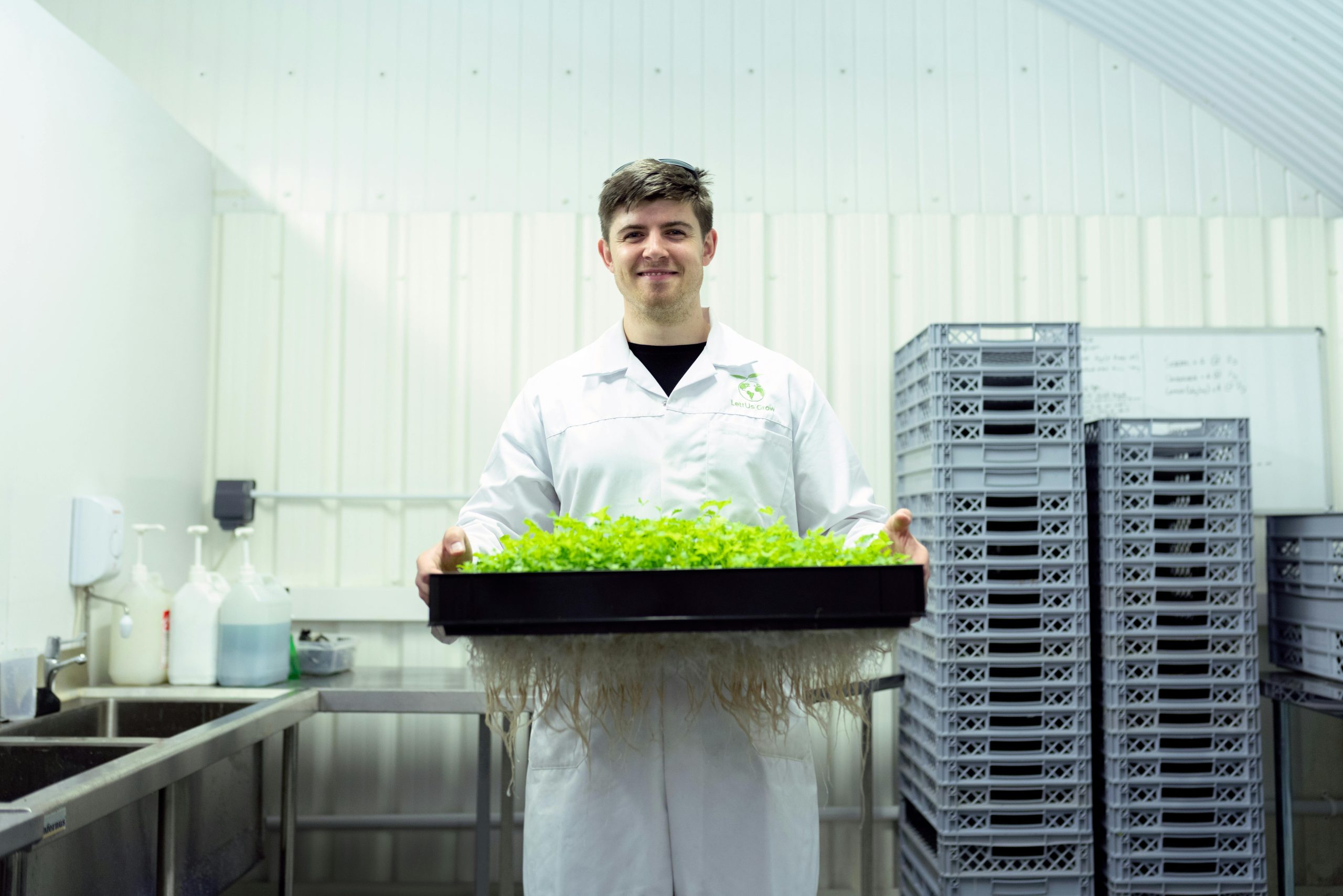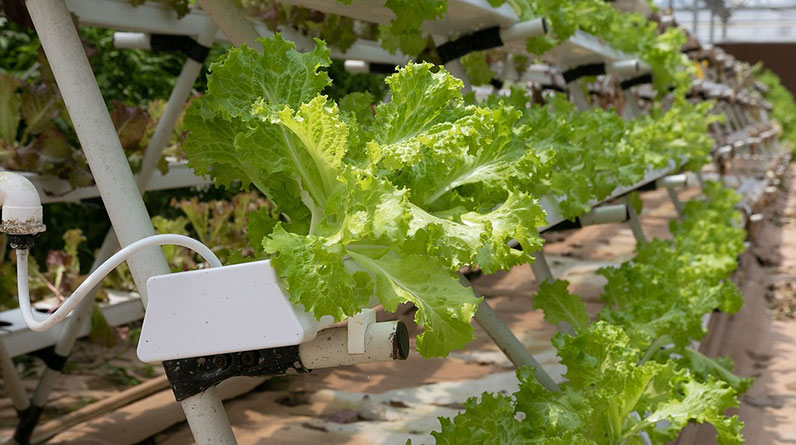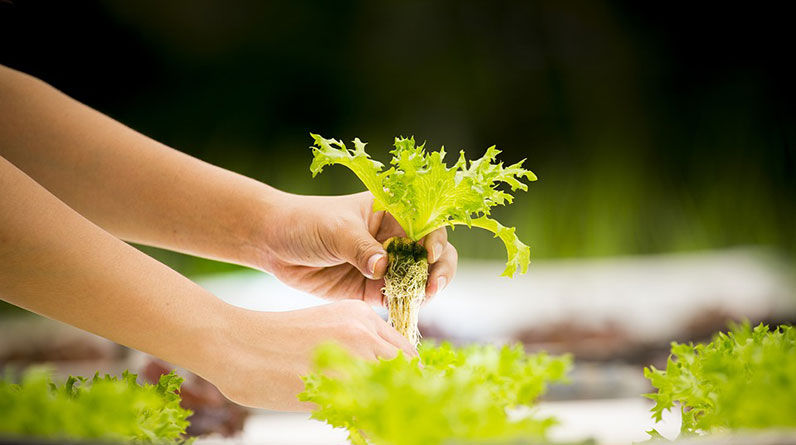
Table of Contents
- 1. Deep Water Culture (DWC) Systems
- 2. Nutrient Film Technique (NFT) Systems
- 3. Vertical Hydroponic Systems
- 4. Ebb and Flow (Flood and Drain) Systems
- 5. Drip Hydroponic Systems
- 6. Wick Systems for Herbs
- 7. Aeroponics for Herbs
- 8. DIY Hydroponic Systems
- 9. Aquaponic Systems
- 10. Automated Smart Hydroponic Systems
1. Deep Water Culture (DWC) Systems
What is a DWC System?
Deep Water Culture (DWC) is one of the simplest, most effective hydroponic systems for herbs, especially popular among beginners and seasoned growers alike. In this setup, plant roots are suspended in a nutrient-rich, oxygenated water solution. The strategy allows herbs like basil, mint, and parsley to thrive by providing constant access to water, oxygen, and nutrients.
In 2025, DWC remains a favorite due to its low cost and easy scalability. It requires minimal equipmentâusually just a container, air pump, air stone, and net pots. This setup enables herbs to grow rapidly, often with faster harvests compared to soil gardening.
For optimal results, maintaining proper oxygenation is crucial. Using an air pump with a diffuser ensures your herbs receive enough oxygen, leading to healthier roots and lush growth.
Advantages of DWC for Herbs
One major advantage is the rapid growth rateâherbs can grow several times faster than traditional soil methods. This is because roots don’t have to search for nutrients; they have immediate access to a steady supply.
Additionally, DWC systems are highly water-efficient, using less water per plant compared to soil gardening, making them environmentally friendly and cost-effective in 2025.
Maintenance is straightforward, especially in small-scale setups; regularly checking pH and nutrient levels keeps your herbs thriving without much fuss.
2. Nutrient Film Technique (NFT) Systems
Understanding NFT Hydroponics
Nutrient Film Technique (NFT) is a popular hydroponic method for growing herbs in 2025, especially in commercial setups. It involves a gently sloped channel through which a thin stream of nutrient-rich water flows continuously past the roots of your herbs.
The roots hang into the channel, absorbing the nutrients as they flow, which keeps them oxygenated and healthy. Common herbs like basil, cilantro, and chives perform particularly well in NFT systems.
Modern NFT setups often incorporate energy-efficient pumps and sensors to monitor flow rates, ensuring that herbs receive a consistent supply of nutrients without over- or under-watering.
Pros and Cons of NFT for Herbs
One key benefit of NFT is the precision control over nutrient delivery, leading to healthy, uniform growth. Itâs also highly space-efficient, making it suitable for small or urban gardens in 2025.
However, NFT systems are sensitive to power outages or pump failures, which can cause the roots to dry out quickly. For this reason, integrating backup power sources or humidity controls is advisable.
Regular monitoring and maintenance help prevent clogging and ensure the smooth flow of nutrients, keeping your herbs in top condition.
3. Vertical Hydroponic Systems
Maximizing Space with Vertical Gardens
In 2025, vertical hydroponic systems are making a big splash among urban gardeners and those with limited space. These systems stack growing trays or towers vertically, allowing you to cultivate a variety of herbs like basil, thyme, and oregano in a compact footprint.
Vertical setups can be configured with drip, NFT, or aeroponic systemsâproviding flexibility based on your needs. Growing herbs vertically also improves airflow, reducing the risk of fungal diseases.
Many modern vertical hydroponic units are modular, so you can expand and customize your garden over time, making them ideal for both home and commercial herb production.
Design Tips for Vertical Hydroponics
Proper drainage and nutrient circulation are essential in vertical systems to prevent pooling and ensure even distribution. Installing LED grow lights at strategic intervals ensures all herbs receive enough light, especially indoors.
Regular cleaning of pipelines and nutrient reservoirs helps prevent clogs and algae buildup, keeping your herbs healthy and productive throughout 2025.
4. Ebb and Flow (Flood and Drain) Systems
How Ebb and Flow Works
Ebb and Flow systems cycle nutrient solution into plant containers at regular intervals, flooding the roots, then draining away to provide fresh oxygenated water. This cyclical process mimics natural water movement, promoting vigorous herb growth.
These systems are particularly popular for growing herbs like basil, mint, and parsley because they encourage strong root development and high yields.
In 2025, automated timers and sensors make ebb and flow systems even more efficient, reducing manual intervention and optimizing plant health.
Benefits for Herb Gardening
One of the main advantages is the ability to customize flood and drain cycles based on herb species and growth stages. This flexibility ensures herbs get the right amount of water and oxygen at each stage.
Additionally, ebb and flow systems use less water than traditional watering methods, saving resources in the long run. They also enable better control over nutrients, which can improve flavor and potency of your herbs.
Regular system checks and cleaning are important to prevent clogging and maintain optimal flow, especially in 2025’s high-tech setups.
5. Drip Hydroponic Systems
Basics of Drip Hydroponics
Drip systems deliver nutrients directly to each plantâs root zone through a network of tubes and emitters. This system is highly adaptable and perfect for growing a variety of herbs such as cilantro, basil, and dill.
In 2025, drip systems are often automated with timers and adjustable flow rates, making them efficient and easy to manage for both hobbyists and commercial growers.
The precise delivery of nutrients helps prevent overfeeding and root rot, common issues in other hydroponic methods.
Practical Tips for Drip Systems
Universal features include adjustable drippers for each herb, enabling customized feeding schedules. Regular inspection of emitters ensures they don’t clog, which can be a common issue.
Maintaining proper pH and nutrient levels is essential for healthy herb growth. Use reliable test kits and sensor technology in 2025 to streamline this process.
Additionally, elevating your reservoirs and plumbing minimizes risk of leaks and produces more consistent water flow.
6. Wick Systems for Herbs
Understanding the Wick Method
The simplest hydroponic system for herbs is the wick system, which uses a wick (usually fabric or cotton) to draw nutrient solution from a reservoir directly to the roots. This passive system requires no pumps or electricity, making it ideal for beginners or small-scale indoor gardens.
In 2025, wick systems are favored for their low cost and low maintenance. They work best with small herbs like thyme, basil, and mint.
While not suitable for large-scale operations, the wick system provides a practical way for hobbyists to start their hydroponic journey easily.
Advantages and Limitations
Wick systems are silent and energy-efficient, with no moving parts that could fail. They also donât require complex plumbing or electronics.
However, they have limitations in water and nutrient delivery, especially for larger or faster-growing herbs, which require more frequent replenishment or alternative systems.
Regular monitoring ensures your herbs get the nutrients they need without over-saturating the wick.
7. Aeroponics for Herbs
What is Aeroponics?
Aeroponics is a high-tech hydroponic method that suspends plant roots in an air environment and sprays them with a nutrient mist. Itâs considered one of the most efficient systems for herb growth, offering superior oxygenation and nutrient absorption.
In 2025, aeroponic systems are increasingly automated, often integrated with IoT sensors controlling mist cycles, temperature, and humidity for optimal herb growth.
This method is particularly useful for delicate herbs that benefit from high oxygen levels, such as cilantro and basil.
Benefits of Aeroponics for Herbs
Herbs grown aeroponically often develop faster, with higher yields and more potent flavors due to the optimal root environment.
This system minimizes water usageâup to 90% less than traditional soil gardeningâand reduces pests and diseases.
Setting up an aeroponic system in 2025 requires investment in technology but offers the highest growth rates and resource efficiency.
8. DIY Hydroponic Systems
Creating Your Own Hydroponic Setup
Many herb enthusiasts in 2025 are building their own hydroponic systems, customizing setups to fit their space and budget. Common DIY water-based systems include simple buckets with aeration, custom-made NFT channels, or ebb and flow tables.
Online tutorials and community forums provide guidance on materials, design, and troubleshooting. DIY hydroponics is a rewarding way to learn and grow herbs like basil, chives, or oregano at home.
The key is starting small, experimenting, and scaling up as you gain confidence and experience.
Design Tips and Best Practices
Use food-grade containers and ensure proper ventilation and light. Regularly test water pH and nutrient levels to maintain plant health.
In 2025, adding automation elementsâlike timers and sensorsâcan simplify maintenance, bringing your DIY system closer to commercial standards.
Remember, consistency and monitoring are vital to success in DIY hydroponic systems for herbs.
9. Aquaponic Systems
Integrating Fish and Herbs
Aquaponics combines fish farming with hydroponics, creating a symbiotic environment where fish waste supplies nutrients for herbs like basil, mint, and parsley. In 2025, aquaponic systems are gaining popularity for their sustainability and resource efficiency.
This method provides continuous nutrient cycling, reducing the need for synthetic fertilizers. It also produces both fresh herbs and fish for a dual harvest.
Successful aquaponics requires balancing fish health with plant needs, making system monitoring essential.
Advantages of Aquaponics for Herbs
The natural nutrient source results in organic herbs with better flavor profiles. It also reduces water usageâas much as 90% lessâcompared with conventional gardening.
Moreover, aquaponic gardens can be kept indoors or in small spaces, perfect for urban environments in 2025.
Key to success includes maintaining proper pH levels, managing fish stock, and ensuring consistent water flow.
10. Automated Smart Hydroponic Systems
The Future of Hydroponics in 2025
Smart hydroponic systems incorporate IoT devices, sensors, and automation technology to optimize herb growth. These systems continuously monitor pH, nutrient levels, temperature, and humidity, adjusting settings automatically.
They are especially useful for busy individuals who want consistent, high-quality herbs with minimal manual effort. Popular herbs like basil, oregano, and cilantro thrive under these intelligent setups.
Many brands now offer companion apps, making it easy to oversee and tweak your herb garden remotely.
Benefits of Automation
Automation ensures your herbs receive optimal conditions 24/7, reducing risks related to human error. It also saves time and improves yield consistency.
Studies show that smart hydroponic systems lead to faster growth rates and higher nutrient use efficiencyâperfect for 2025’s increased demand for sustainable food production.
If you’re serious about growing herbs indoors, investing in a smart system can be transformative.
Frequently Asked Questions
1. What are the best hydroponic systems for herbs in 2025?
Based on current trends, deep water culture, NFT, and vertical systems are among the most effective for herbs in 2025. Your choice depends on space, budget, and scale.
2. How do I choose the right hydroponic system for my herbs?
Consider factors like available space, budget, technical skill, and the types of herbs you want to grow. Simpler systems like wicks or DWC are great for beginners, while aeroponics and smart systems suit advanced growers.
3. Can I grow herbs indoors using hydroponic systems?
Absolutely! Hydroponic systems are perfect for indoor herb gardening, especially with grow lights and climate controls in 2025. They enable year-round harvesting regardless of weather.
4. What maintenance do hydroponic systems require?
Regular tasks include checking pH and nutrient levels, cleaning reservoirs, inspecting pumps and emitters, and monitoring plant health. Automating some processes reduces manual effort.
5. Are hydroponic systems for herbs environmentally friendly?
Generally, yes. They use less water, reduce the need for pesticides, and can be more resource-efficient than traditional soil gardening, especially with smart and automated setups in 2025.
Conclusion
Choosing the right hydroponic system for herbs is essential for maximizing yield, flavor, and growth speed in 2025. From simple wick setups to high-tech smart systems, thereâs an option tailored to every gardenerâs skill level and space limitations. Throughout this guide, we’ve explored 10 effective hydroponic systems for herbs, each offering unique advantages. Embracing these innovative solutions not only enhances your herb-growing experience but also promotes sustainable, efficient gardening. If you’re looking to elevate your indoor herb garden, understanding and selecting the right hydroponic systems for herbs will pave the way for abundant, flavorful harvests in 2025 and beyond.


